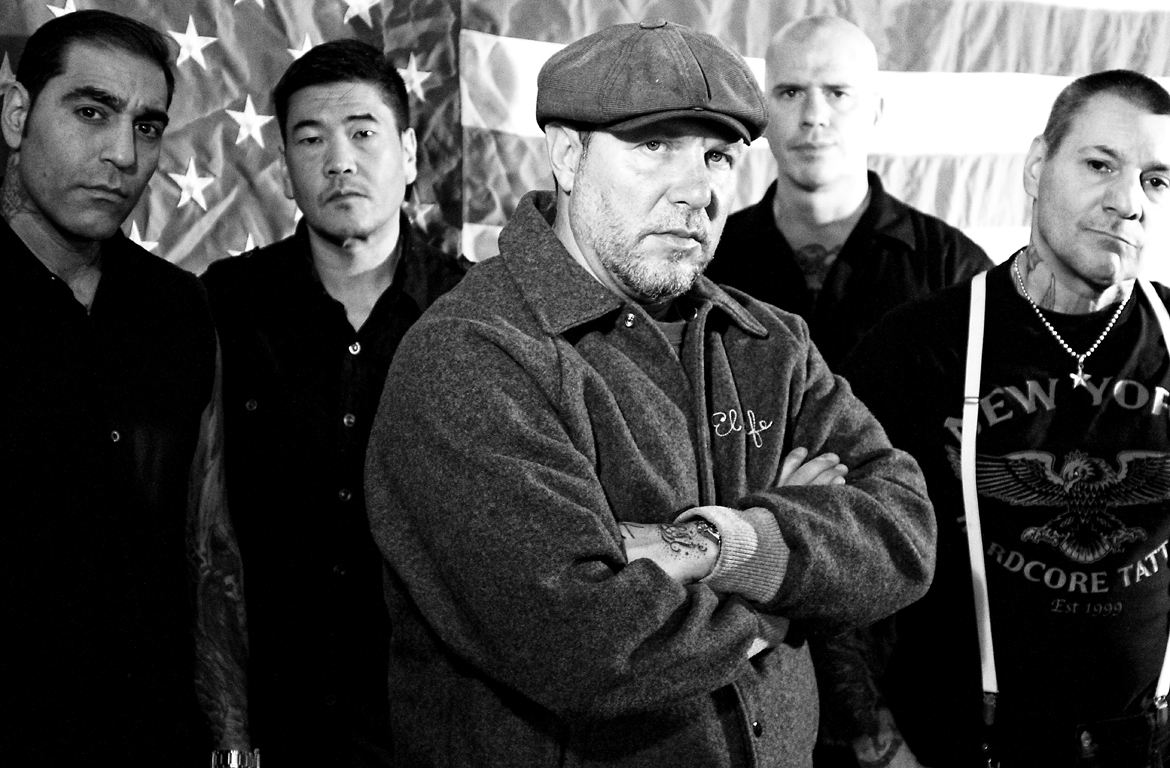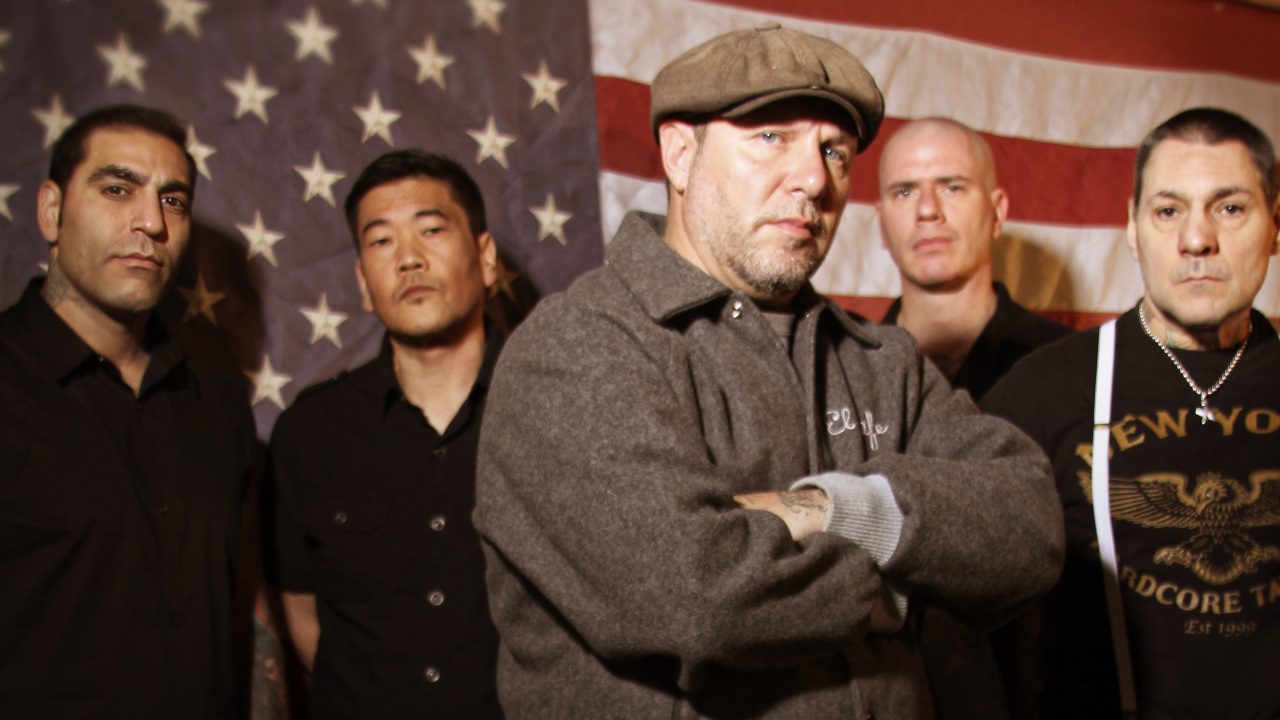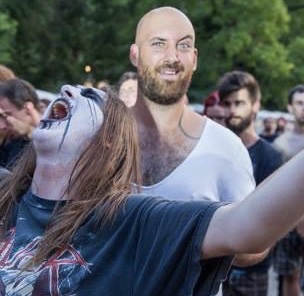Roger Miret chuckles when the comparison is put to him. “Heh! Yeah, I guess, like you say, maybe we are the hardcore Iron Maiden.” The Agnostic Front vocalist says. “We even have our own Eddie Character; he’s called (AF guitarist) Vinnie Stigma!” It’s no idle claim either, for over three decades now Miret, Stigma and the band they formed together in New York in 1982 have been the frontrunners, figureheads and true beating heart of New York hardcore. Keeping the flag flying through commercial downturns and critical maulings, they have never wavered, never sold out and have achieved a fanbase that can only accurately be described as ‘obsessive’. Sound like any NWOBHM legends to you? Yup, sure does, doesn’t it?
The good news for that fanbase is that Agnostic Front have a new album, The American Dream Died, which captures all the energy, power and fire that goes into making AF such a revered band. “We went in with seven songs ready,” Roger tells Hammer. “The rest was just jammed out, and we didn’t want to know the record too much. You go in and learn it quick and do one or maybe two takes.”
Presumably that’s how you keep the sound of the band so fresh still after all these years?
“Yeah, we’ve never been a studio band,” admits Roger. “The hardest thing for us is the recording process. We’re more of a live band, if you’ve seen us live you’ll know what I’m talking about, so it’s important for us to be captured correctly. We have to keep it rowdy and we have to keep the vibe of old school hardcore.”
One of the most evocative songs on the record is Old New York. An almost wistful, but still incredibly angry, look back at the change Agnostic Front’s home city has gone through in Roger’s lifetime. The old ‘it’s was better in my day!’ lament is a dangerous move. It would be easy in the hands of other bands to merely sound bitter and make a monumental misstep here, but it’s actually one of the album’s stand-out tracks.

“It’s just about me reminiscing,” Roger shrugs, “old New York to me is like Taxi Driver. That’s the New York I grew up knowing, there was an element of danger but there was an honesty in the bands and in the people. The artist’s community back then was so together, it was a special time and a special place. Magical, beautiful, creative. Those were my glory days, but it’s different now. I’m sure something is going on but it’s not my party anymore. It’s not as dangerous and it’s not as prevalent and I do miss those days.”
Looking back at this statement you’d be tempted to attribute it to the state of punk rock today, the scum and squalor that inspired Agnostic Front has slowly but surely worked its way into the mainstream consciousness. Is the dilution of the scene that inspired him one of the things that Roger is referring to in this instance?
“Well I just think that whatever it is that you get into or that inspires you,” he begins, “it’s best to research the roots. Our roots are directly into the punk world, but music has evolved so much that it’s almost impossible to know what’s going on! There are kids out there that are waving the hardcore flag and are passionate about what they do, just because I don’t know them that doesn’t mean they aren’t real. There are thousands of bands out there and you can’t know every band, it isn’t like the old days where you’d go ‘Oh, that’s Black Flag and that’s Minor Threat and that’s Negative Approach.’ You just have to hope that these kids do what we did and make their own way that stands the test of time.”
And just how have Agnostic Front stood the test of time? Last year saw the 30th anniversary of their classic debut Victim In Pain, an album that still stands up alongside any in the genre and was responsible for both influencing generations of punk, skater, hardcore and crossover kids and nailing the sound that would become recognisable as New York hardcore.
“Our legacy is this,” Roger says, “that we have so many bands telling us that we inspired them. That feels incredible, and I think it happened because we were genuine. It wasn’t about record deals or press exposure, we treated people right and we were always true to ourselves. I think hardcore is more about lyrics than music anyway, and music should have no boundaries. If you’re singing about what we sing about, oppression and miscarriages of justice, then people should just come out and celebrate. This is how we’ve always been, I never would have imagined in my wildest dreams when Victim In Pain came out that I’d still have people telling me all this time later that it meant something to them or it made them make a positive change in their life… or that I’d be able to make a living from playing hardcore. That still blows my mind.”
And how do you think you, out of all those bands, have managed it?
“Well, we’re one of the originators,” smiles Roger. “We’ll always have that going for us, that we got in there first. And…” he laughs. “Like you said; we’re the hardcore Iron Maiden!”

